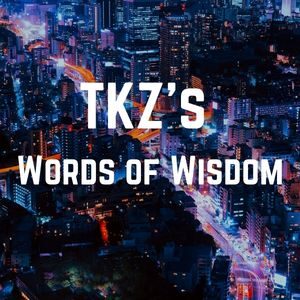Once upon a time mass-market paperbacks dominated popular fiction publishing. You could walk into book stores, drug stores, grocery stores, even cigar stores and lunch counters, and find spinner racks stuffed with paperbacks. Romance, mystery, thriller, sci-fi, westerns, historical epics, you name it.

It all began in 1935 when English Allen Lane had a brainstorm, allegedly after spending the weekend visiting Agatha Christie and her husband. He launched Penguin books with ten books in paperback, including Agatha Christie’s Murder on the Links. In 1939 Robert de Graff started the first American mass-market line when he began Pocket Books. As this 2014 New Yorker article by Louis Menand pointed out, “[t]he key to Lane’s and de Graff’s innovation was not the format. It was the method of distribution.”
From the 1940s into the early 2000s they were a big part of publishing, and where indeed everywhere.
When I began buying fiction as a teen in the 1970s, all my purchases were mass-market paperbacks. I had built a small library by the time I met my future wife (at an after school job we both had while in high school, no less) and loaned her some novels to read once we started dating, after having discovered we had a mutual passion for books.

A section of our custom book shelves, sized for mass-market paperbacks.
Mass-market paperbacks were usually 4 inches or so wide, and 6 to 7 inches tall. Paper quality even in the 1960s and 1970s wasn’t great, but by the 1980s it had improved quite a lot, being more durable and often better printed than previously. They were still quite popular. Many of us waited to buy the mass-market paperback version of a new release by a favorite author, which was usually a year after the hard cover was published. Non-fiction was also published in mass-market. That was the format I read Zen and the Art of Motorcycle Maintenance in while I was in college.
The thriving “paperback original” market persisted into the 1980s and early 90s. For a new genre author, it wasn’t uncommon to be initially published “only” in paperback.
So it surprised me when I began working at the library in 1987 that my branch had no paperbacks in its collection. None of the branches did. Apparently a decision had been made some time before I had been hired to stop buying them. This lasted for several years, so if a book was a paperback original we didn’t have it on our shelves. Patrons were disappointed, but the library had decided not to buy books in paperback because they wore out quickly. It cost money to put a new book in the computer system, as well as affix barcodes and spine labels. It wasn’t until sometime in the 1990s my library system began purchasing library books again.
It was hard because neighboring library systems did purchase them during that time, and we’d hear about it. Librarians want to provide “materials” (books, music, and later, video) which their patrons ask for and typically hate disappointing people.
We did have a collection of donated paperbacks, which we dubbed “Bring-Backs,” which filled a rollout cart with side shelving, and was a hit with our patrons, often being emptied out and needing to be restocked. Fortunately, we always seemed to have enough donations to keep it going.
When the library finally did resume purchasing paper backs in the 1990s, it was just a few at first. It took years for us to build up a collection. And yes, they did wear out faster than a hardcover. But if that was the only way a particular book in demand was available, we bought it. Patrons were pleased, save for the few holdouts who disapproved of the “pulp novels” and “lurid” romances we bought. Eventually, mass market paperbacks had a sizable presence on our library fiction shelves alongside hardcover and trade paper backs.
Mass-market paperbacks are still around, especially in romance and mystery, though sales continue to decline.
I’m self-published and all my print editions are 5.25 inches by 8 inches, so are close to the old mass market-size. We still have a large collection on custom built shelving at our house as well. Below is a photo of a part of those shelves:
Mystery and thriller readers still love to read in print, and that includes paperbacks, though more often the larger trade format is what is available.
I attended Left Coast Crime in Seattle this spring, and there were newly released paperbacks among the hardcovers. My haul of book giveaways included these paperbacks, one of which was the current “tall boy” mass-market paperback.

As an indie mystery author myself, I’ve been surprised to see my print sales being a greater percentage of my overall book sales, in contrast to when I published urban fantasy novels.

As far as I know, print sales are still a very substantial part of a traditionally published author’s sales. Publishers Weekly summed up print sales for 2023 in this article.
Now we turn to two excerpts from the Kill Zone archives dealing with paperbacks, by Michelle Gagnon and Mark Alpert.

Recently, Dorchester Publishing, one of the country’s oldest mass market publishers, announced that it is abandoning traditional print books in favor of digital format and print on demand.
That announcement reminded me of a conversation I had with an editor at a conference a few months ago. She predicted that in the coming digital shakeup, hardcover print runs would be smaller, trade paperbacks would boom, and mass market books would vanish entirely.
I was skeptical. After all, the great thing about mass market books is that they remain almost as cheap (or cheaper) than digital downloads, and they’re ideal reading material for all of those places you wouldn’t take your Kindle/iPad: the beach, the tub, the pool. So why would this be the first format to fall to the digital ax?
The fact that Dorchester is the first to make this shift is particularly bad news for Hard Case Crime, the imprint that has revitalized the pulp fiction industry with semi-ironic works by major novelists such as Ken Bruen and Stephen King. Going digital stands in stark contrast to what publisher Charles Ardai was attempting to achieve–a return to the era of dime store novels you could tuck in your pocket. (On a side note, how ironic is it that Ardai, who made his money via the dotcom boom, is deadset on producing books in print?) In response to the Dorchester move, he’s apparently considering moving the entire imprint to a different publisher.
I was encouraged to see that in the article, a representative from Random House expressed faith in mass paperbacks. These days, most midlist and debut authors are only offered a mass market release. If that shifts entirely to digital content, it would be a shame. For me, the best part of the publishing process was the day that I opened a box to find a stack of novels with my name on the cover. I’m not sure that opening a pdf file would convey the same thrill.
Michelle Gagnon—September 2, 2010
My third novel, Extinction, will come out in paperback on Tuesday. I’m a big fan of paperbacks in general; of all the books I buy, only about twenty percent are hardcovers. The main reason is the price difference. Whereas the list price for the hardcover of Extinction is $25.99, the price on the cover of the mass-market paperback is only $9.99. The difference isn’t quite so extreme after discounting — Amazon, for example, sells the hardcover for $18.80 and the paperback for $8.99 — but it’s still pretty significant for all but the wealthiest book-buyers.
Paperbacks are also lighter and more portable. They fit inside the pockets of my winter jacket. They’re easier to hide (in case you’re embarrassed about what you’re reading). And they take up less space on your bookshelves, which is an important concern if you live in a smallish apartment with a spouse, two kids and all their paraphernalia. (Electronic books would be even better in that respect, but I just don’t feel comfortable reading them. I can’t really relax when I’m holding a screen. I can’t ignore the screen’s presence, which makes it hard for me to get lost in the story.)
Don’t get me wrong — hardcovers have their place. When I buy a book as a gift, I never get a paperback if the hardcover is available. And I love certain authors so much that I just can’t wait for their paperbacks. (I’m talking about you, Lee Child. And you too, Dennis Lehane.) But I’m a pretty patient guy. I’m dying to read Gone Girl, but I’m willing to wait a few more weeks until the paperback comes out. I’ll bide my time by reading a classic or two. (I’m reading Blood Meridian now. What a freaking amazing book!)
Speaking as a writer now, I love being published in hardcover. I’ve been lucky to have gorgeous book jackets for all my novels. And it feels good just to hold the hardcover — it feels substantial, weighty, lasting. But I’m a relatively unknown writer trying to reach new readers, so publishing paperbacks is crucial to broadening my audience.
Over the past year I’ve noticed that a few very famous authors are eschewing the hardcover route for some of their books and putting out paperback originals. Stephen King did this last summer with Joyland, which was a fun read (definitely not weighty!) and had a great pulpy cover. Taipei, a serious literary novel by Tao Lin, also went straight to paper.
And there’s one more advantage to paperbacks that I haven’t mentioned yet: the teaser. After I finish reading a fantastic paperback, I love turning to the last pages of the book and getting a sneak preview of the author’s next novel. I’m pleased to say there’s a teaser at the end of the Extinction paperback, previewing the prologue and first chapter of my fourth book, The Furies. That novel will be published — in hardcover — next month.
Mark Alpert—March 22, 2014
***
- How about you? Did you read in mass-market? Do you still?
- What are you thoughts on the decline of mass-market paperbacks? Do you wish the format still flourished?
- When it comes to print books, do you prefer hardcover, trade or mass-market?
- If you are a published author, generally speaking how do your books do in print?






![AWREATH3_thumb[1] AWREATH3_thumb[1]](https://killzoneblog.com/wp-content/uploads/2013/12/AWREATH3_thumb-25255B1-25255D_thumb-25255B1-25255D.gif)
